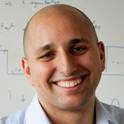
Late visions and trends for the future 6G of wireless communications advocate, among other technologies, the deployment of network nodes with extreme numbers of antennas and up to terahertz frequencies as a means to enable various immersive applications. However, these technologies impose several challenges in the design of radio-frequency (RF) front ends and beamforming architectures as well as ultrawideband waveforms and computationally efficient transceiver signal processing. In this article, we revisit the time-reversal (TR) technique, which was initially experimented in acoustics, in the context of large-bandwidth 6G wireless communications, capitalizing on its high-resolution spatiotemporal focusing realized with low-complexity transceivers. We first overview the representative state of the art in TR-based wireless communications, identifying the key competencies and requirements of TR for efficient operation. Recent and novel experimental setups and results for the spatiotemporal-focusing capability of TR at the carrier frequencies 2.5, 36, and 273 GHz are then presented, demonstrating in quantitative ways the technique's effectiveness in these very different frequency bands as well as the roles of the available bandwidth and the number of transmit antennas. We also showcase the TR potential for realizing low-complexity multiuser communications. The opportunities arising from TR-based wireless communications as well as the challenges for finding their place in 6G networks, also in conjunction with other complementary candidate technologies, are highlighted.
- 4G mobile communication systems,
- 5G mobile communication systems,
- Complex networks,
- Focusing,
- Millimeter waves,
- Orthogonal frequency division multiplexing,
- Radio transceivers,
- Wireless sensor networks
Preprint version: https://arxiv.org/abs/2206.08419

IR Deposit conditions:
OA version (pathway a) Accepted version
No embargo
When accepted for publication, set statement to accompany deposit (see policy)
Must link to publisher version with DOI
Publisher copyright and source must be acknowledged